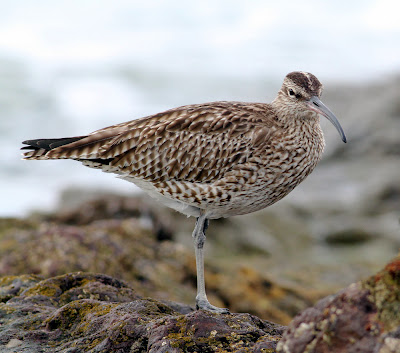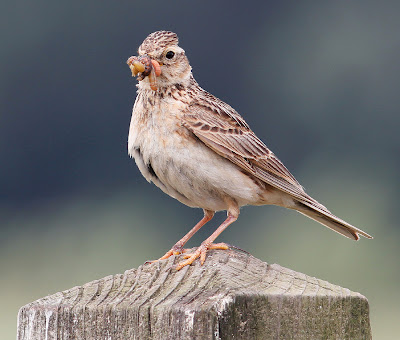I set off birding on Saturday morning but abandoned the quest quite early on when I found myself marooned by shoots taking place all around me; the Christmas holiday is when local sportsmen with time on their hands turn out in force hoping to bag a free meal courtesy of the local wildlife.
No such problems today, as unlike birders, shooters don’t do consecutive days so I knew I was in for a birding morning. Some sportsmen don’t seem to do Sundays either - maybe they go to church?
A quick look on the soggy fields at Lane Ends gave counts of 320 Curlew, 140 Lapwing and 2 Golden Plover. I was hoping geese might drop in for breakfast but none did so I made my way to Fluke Hall Lane.
The rains of recent days topped up the flooded stubble resulting in good numbers of waders on the Fluke Hall fields. The birds are quite distant and don’t get too near the road with its constant traffic of people and vehicles so it’s mainly a patient scope job in deciding the numbers present. The 100 or so Black-tailed Godwits of November and December are long gone with now just a single bird to be found amongst 160+ Redshank, 235 Lapwing and 2 Snipe. Today’s single Black-tailed Godwit was easier to approach than a whole gang of them ever can be.
There are 40 or more Linnets and approximately 25 Skylarks feeding in the field, showing themselves only when the waders spook to send most things into the air. A couple of Little Egrets feed here too, sometimes on the flood but mainly in the drainage ditches that cross the fields. Large numbers of Jackdaws and Carrion Crows are still in evidence, c300 and 80 respectively, but only 40 or so Woodpigeon.
The wildfowler’s pools held 45+ Shelduck, 2 Pintail, 2 Teal and c250 “Mallards”, the latter the released for sport variety making it impossible to determine any truly wild Mallards.
A party of 8 Whooper Swan and 6 Mute Swans heading out to the marsh had unexpected company today in the form of a Black Swan. While Black Swans at rest look almost entirely black it is in flight only that their extensive white wing feathers becomes apparent.
Whooper Swans
Black Swans originate in Australia but over the years a number of them have escaped from private collections in Britain, the escapees now breeding at dozens of sites across the country. Owners should clip their wings to prevent them from flying away, but even if their owners do this the feathers grow back allowing many birds to escape into the wild.
The number of locations at which Black Swans are found has more than doubled in the past five years, while the number of breeding sites has more than tripled, with well-established populations at a few UK locations.
The latest figures from the BTO Bird Atlas 2007-11 suggests that Black Swan numbers have increased at such a rate that they may soon be added to the authoritative “British List" of birds found in the UK. Until now, the Black Swan population has not been considered large enough to be “self-sustaining”, the criteria for including the species.
Because they are more aggressive than other species, there are fears Black Swans may out-compete the native white Mute Swan for food and habitat in many areas. They could also breed with mutes – a hybrid has been created in captivity called a “blute swan”. Should someone play around with both a Whooper and a Black, the resultant offspring would no doubt be christened a “blooper swan”.
Towards Pilling water I could see a Kestrel perched on the edge of the plantation, just watching and waiting the ground below, and then overhead a Buzzard making steady progress towards Fluke but all the time pursued by 2 gulls.
I’d left the car at the hall so walked back through the trees to retrieve it. The storm of Thursday night had deposited an old beech tree across the road, the remains now cut into huge chunks and left by the side of the road.
All was now still in the morning sunlight, just the sounds of Jackdaws and Crows above, Tree Sparrows and Blackbirds below. I even saw a Song Thrush.
All was now still in the morning sunlight, just the sounds of Jackdaws and Crows above, Tree Sparrows and Blackbirds below. I even saw a Song Thrush.
























































.jpeg)



.jpg)












